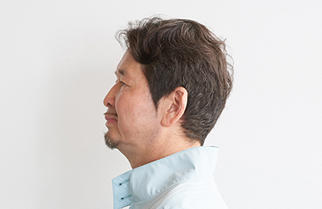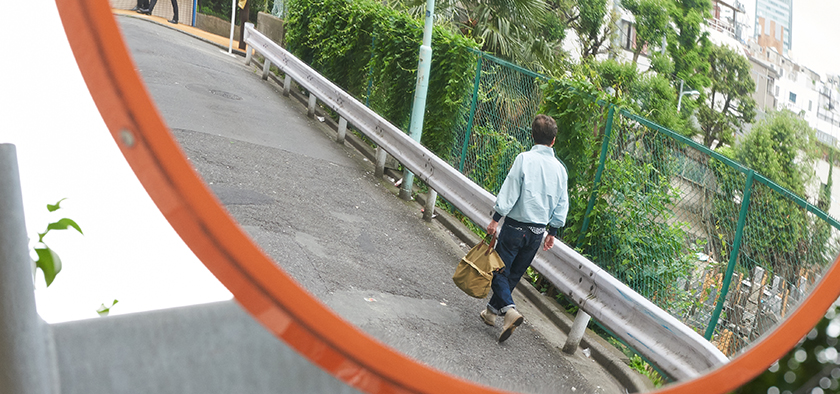
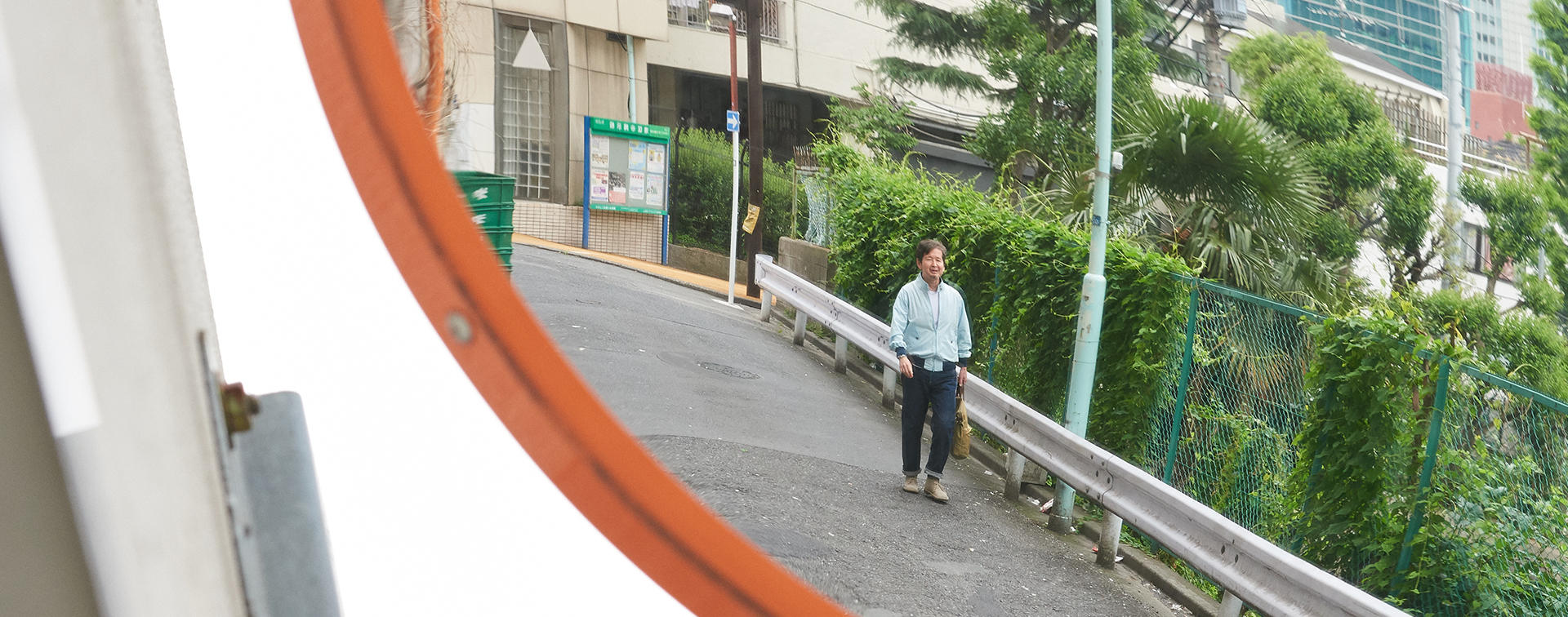
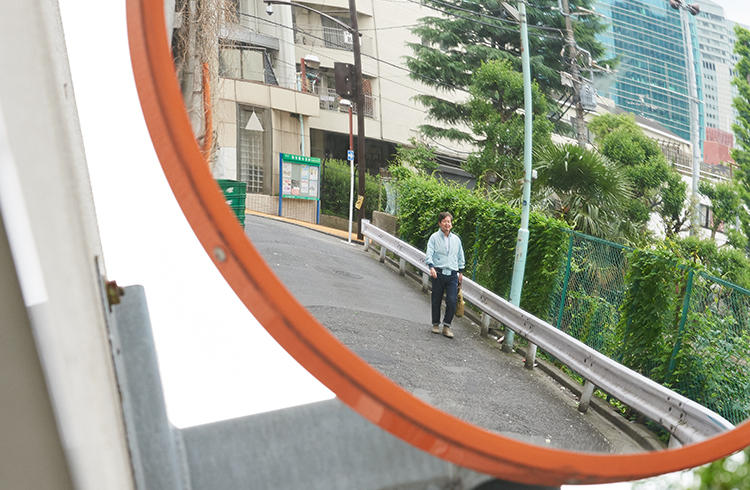
Looking at the whole landscape of Roppongi to contemplate its future
Walking in the streets, studying history and making new maps
Columnist Asato Izumi has been interested in maps since his childhood and has a wealth of experience of exploring towns with map in hand. Walking in the alleyways and the narrow spaces between buildings, Izumi is adept at finding new points of view for appreciating landscapes which are not written about in ordinary guide books; letting people see the scenery of Tokyo with new eyes, he might be described as a "town walking specialist". We asked Izumi about the perspectives he has discovered in Tokyo while walking in the streets, as well as about the appeal and potential of Roppongi.
The difference between the inner side and outer side of the Yamanote Line
I was born and raised in Tokyo; my home town is Naka-ochiai in Shinjuku city. I lived there until I was around 30. When I was small, the distance from our home to the center of Tokyo seemed very long to me. That's because about 50 years ago, the scenery on the inner side of the Yamanote Line was vastly different from that on the outer side of the railway line. Today, high-rise buildings and neon-lit alleyways are ordinary landscapes in Tokyo, but in those days, such landscapes were limited to the inner side of the Yamanote Line. So I was very excited whenever my parents took me to Ginza. I would feel that we had really come to Tokyo. In Ginza there was scenery that I had only seen before in picture books.
In Tokyo now, the scenery does not differ largely wherever you go, but the towns around the various railroads still have their own different characteristics, and I think that is part of the appeal of Tokyo. The city is open to all kinds of people and has diversity. So I don't have a favorite town in Tokyo. Every town is interesting in its own way.
But wherever I go, the things that I'm drawn to are basically the same. That is, I'm delighted when I unexpectedly come across an old building such as a Western-style house belonging to the pre-war period or any other building of a bygone era. I'm in my sixties now, and inevitably, I'm often attracted to architecture with a nostalgic air such as old buildings used by the local doctor or barber. Every time I come upon such a building, I get the urge to go inside and have a good look. But then, I would need to get an appointment with the doctor, or have my hair cut, so I get really conflicted at such times. (laughs)
Streets are living creatures, like people
I'm fond of the type of buildings that I grew up seeing as a child, and so when we had the period of high economic growth, and towns were transformed into "new towns", I felt annoyed, to be honest. But over the years, I've found that my feelings have changed.
For instance, in 1963, the year before the Tokyo Olympics, the Inner Circular Route of the Shuto Expressway was built over Nihonbashi. At the time, I was shocked because it was as if a lid had been placed over the skies, but with the passing of years, the expressway now seems to have a slightly classical air, and now I feel affection for it. It's the same with the "danchi" apartment buildings. The large-scale danchi were symbols of modernization and they were trendy, but at that time, I felt they looked unrefined compared to traditional Japanese houses. But strangely, now that 30, 40 years have passed, these buildings have a certain presence as architecture.
I suppose that streets are essentially like people: they are like living creatures. As streets change, they impress people in different ways, and there are moments when you can make discoveries and notice interesting things about them. To have those moments, and to cultivate a discerning eye, you need to walk along a lot of different streets; there are so many things that you can only discover by actually walking.

Looking at a town's landmarks from the back streets
There's a landscape I like in Roppongi. In a hilly spot in Yamanote near Roppongi Hills, there's a small pond called Gama-ike. A legend exists that during the Edo period, this pond saved people from a fire; it's a well-known pond in the neighborhood and it was introduced in the NHK program "Buratamori". The pond is currently in the compounds of a condominium, so only the residents there can see it, but I like the view of Roppongi Hills that you can get when standing in an area near that pond.
Gama-ike
In the Edo period, the pond was in the garden of a house belonging to Harumasa Yamazaki, the feudal lord of the Nariwa clan in Bichu. At that time, the size of the pond was 500 tsubo (about 1,652 square meters). When there was a large fire in the neighborhood, all the houses nearby were burned down, but the Yamazaki house was undamaged. According to legend, the fire was put out by a giant frog that came out of the pond and sprouted water. In later ages, the pond was gradually filled with earth and became smaller. It is now in the courtyard of a condominium.
Buratamori
A popular NHK program where personality Tamori -a geography and earth science enthusiast - walks through various neighborhoods and learns little-known facts about the local history and the residents' lives. The program started in 2008 and is now in its fourth season. The walking expeditions were initially made within Tokyo, but since the fourth season, they are made in places across Japan.
http://www.nhk.or.jp/buratamori/
The areas of Roppongi and Moto Azabu lie in a place where the borders of the Yamanote plateau and the lowlands are, and that's why there are many hills. Dogen-zaka, Nadare-zaka, Imoarai-zaka, Tanuki-zaka - the back streets are dotted with numerous hills that all have a long history. When you look at the landmarks from these back streets and slopes, Roppongi can look very different.
When you are walking in the alleyways and you get a glimpse of a landmark like Tokyo Midtown or Tokyo Tower, it takes you by surprise and you feel as if your world has expanded a bit. The word looks different depending on where you stand - what your point of view is, what your perspective is. And for me, walking around towns is about finding those perspectives.
Getting lost in the streets is also interesting
When walking the streets, it's useful to have a map. Ever since I was small, I loved looking at maps. I would always be wandering around the neighborhood with a map in hand. I was very curious about roads, thinking, "Where does this road lead to?"
My walks around town became full-fledged when I was in the fifth or sixth grade at elementary school. I would get off at a bus stop I had never got off at before and ramble about, and when I got home, I would make my own personal map, writing the names of the bus stops I had got off at for the first time.
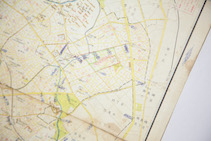
My own personal map
During his late years at elementary school, Izumi used maps of the various different cities in Tokyo published by Hiji Publishing. The maps he particularly used were those of Nakano city and Nerima city which were close to his home. Izumi tells us that he had great fun writing in the names of bus stops which were missing in the maps' bus routes.
Later, I started going to an after-hours tutoring school to prepare for junior high school exams; the school was near the Marunouchi Line and so I would get off the stations on the line and stroll about. I frequently used to get off at Awajicho Station. From there, I would walk to Jimbocho and look around the secondhand book stores. I loved studying about the past, so I would buy old magazines and newspapers at the secondhand book stores to learn all kinds of facts about Tokyo's history and culture.
That experience was the foundation for my career as a columnist. Later, as an adult, I adopted the pen name Asato Izumi; it was in 1980 that I became a freelance columnist. I think my first job after becoming a freelancer was writing for the magazine "STUDIO VOICE" which had just been launched; under the flippant title of "Loving the frivolous nights" (laughs) I wrote essays about my walks in Tokyo and the culture I found in the back streets - culture that didn't exist in the main streets.
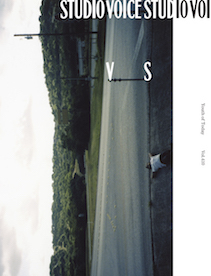
STUDIO VOICE
Launched in 1976, STUDIO VOICE was a forerunner of magazines offering cultural information. With unique feature articles in every issue and fresh designs on its cover, the magazine was popular among young people, and was influential in shaping Japan's cultural scene. However, sales eventually dwindled and publication was halted after the September issue (the 405th issue) which went on sale on Aug. 6, 2008. Subsequently, the magazine was published online on the website STUDIO VOICE ONLINE with occasional issues being printed. In 2015, the magazine was revamped and a printed version of its May issue was put on sale on April 20, marking its first printed issue in six years. Currently, printed versions of the magazine are published twice a year.
http://www.studiovoice.jp/
During the time I was writing that column, I would walk about and often get lost: for instance, I once found myself in Azabu Juban when I was supposed to be going to Akasaka. But I think getting lost is one of the interesting aspects of walking around town.
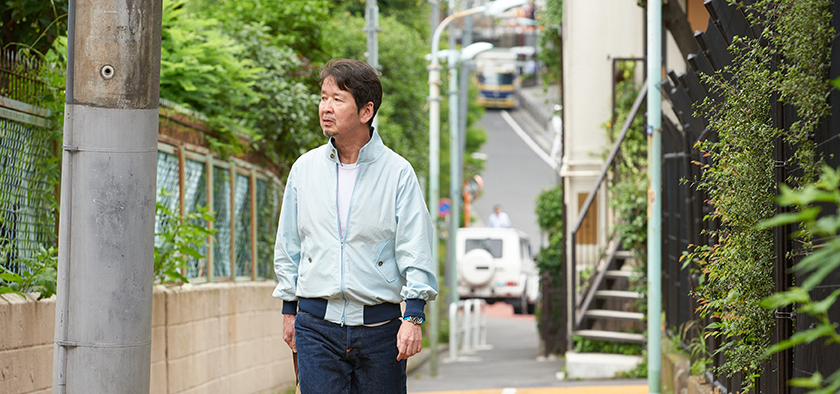
Daytime and nighttime in Roppongi
The initial image of Roppongi that remains in my mind is Tokyo Tower. When I was in the second or third year of high school, I was walking from the Roppongi intersection toward the Roi Building, and I was so impressed by the sight of Tokyo Tower.
The Hamburger Inn
Japan's first hamburger restaurant which was set up in 1950 in Iikura Katamachi by Johnny Wetzstein, an American who calculated wages for General MacArthur. At the time of its opening, there were no round buns in Japan, and it is well known that the restaurant initially used bread loafs with the crusts removed. The restaurant was one of the first to offer American food and culture in Japan and was a representative restaurant of Roppongi for more than 50 years. It closed however, in October 2005.
The entertainment district was beginning to be built around the Roppongi intersection then, and the landscape looked different in the daytime from the nighttime. During the day, it was a bit like Harajuku, scattered with small shops catering to all kinds of cultural tastes and hobbies. I used to wander around those shops and then go to the Hamburger Inn or to the coffee shop Clover where I could relax.
Then at night, the young people would come to the discos and rock bars. My friends and I would go to different establishments in a row; I clearly remember how the illuminated Roi Building looked like a dazzling white castle. Also, there was the Italian restaurant Chianti at the edge of Roppongi in Iikura Katamachi. Every night, lots of celebrities would gather at Chianti and their convertible cars would be parked outside the restaurant. I was young then and in my eyes, it was an awesome sight.
By the late 1980s, the bubble economy was at its height. When you walked from the Roppongi intersection on the Roppongi Dori toward Tameike, you came to the Square Building; almost all of its 10 floors housed discos and it was the landmark of Roppongi at the time.
In 1983, when Roppongi WAVE was built, many young people interested in culture began coming to Roppongi - they were different from the disco-goers who came to party at night. So it was either Square Building or Roppongi WAVE that drew you to Roppongi. I'm sure that many famous people have spent their youthful days in Roppongi.
Towns that are transformed by the incentives of individuals
Roppongi has gone through many eras, and its landmarks are now Tokyo Midtown and Roppongi Hills. But to be frank, I get the feeling that most people come to Roppongi to do things only in these two places, and the area of Roppongi as a whole seems to be hollowing out. I have the sense that people are not looking at the whole landscape of Roppongi.
I wish that Tokyo Midtown and Roppongi Hills could become more connected to Imoarai-zaka and all the other streets and spots in Roppongi so that people will be aware of the other places and want to go there.
I think one important way of doing that is to encourage participation from the people who use the streets. The grounds of Tokyo Midtown used to be site of the Defense Agency's Hinokicho buildings. The town gradually became lively when bars and coffee shops gradually sprung up to cater to the people at the Defense Agency. It would be good if Roppongi could be transformed in the future in the same way - through small establishments and individual incentives. The number of art galleries seems to be growing in Roppongi recently, so I'm pinning my hopes on that kind of development.
The future is linked to the past
iPad ver.(left) aerial photograph + map(right) the Bunmei Kaika period
A map application that shows Tokyo's transformation from the Meiji period to contemporary times. Comprised of 19 different types of maps including aerial photographs, maps with land features drawn in, and maps from seven periods: the Bunmei Kaika period in the late 19th century, the last years of the Meiji period which ended in 1912, the era before the Great Kanto earthquake in 1923, the 1930s before World War II, the era before the mid-1950s when Japan's high economic growth began, the "bubble economy" of the 1980s, and contemporary times. The old maps correspond with data from the GPS (the Global Positioning System), and the user can easily compare them with today's maps. A handy application to take on one's walks to confirm how the landscape has changed with the times.
Tokyo Jiso Chizu, sold by Japan Map Center, Inc. can be downloaded at App Store.
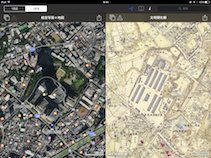
Tokyo Jiso Chizu
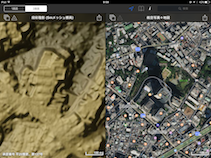
iPad ver.(left) aerial photograph + map(right) the Bunmei Kaika period

iPad ver.(left) aerial photograph + map(right) the Bunmei Kaika period
Nice towns always have good roads. In my view, good roads are roads that are discreet. For instance, once I was in a taxi and there was traffic jam at the Gaien-nishi Dori, and the taxi driver said, "There's a good road nearby" and drove into a back street which didn't look very easy to drive through. That kind of road is the kind of road I like. Both literally and figuratively, I think Japanese people like to walk along the back roads; there's the sense that it can be smart sometimes to turn away from the main road.
Speaking of good roads, I think the roads in Shibuya are interesting. Tokyo has many slopes, but Shibuya is a particularly hilly place. The Shibuya scramble crossing is in a valley, and from there, the streets fan out like rays; wherever you go, the ground is undulated, so it's easy to walk into the backstreets, turning off horizontally. I think such land features has helped give depth to Shibuya's culture.
Shibuya station is currently undergoing a large-scale renovation. I wonder what the station will look like in the future. When I think of the future of Tokyo, I think about the development of underground towns. The underground town at Shinjuku Station and the Yaesu underground town at Tokyo Station are so huge, aren't they? The TV show "Ultraman" which I watched as a child depicted underground towns, but at that time, such places belonged to the world of science fiction. Now however, they have become a reality, and are giving birth to all kinds of cultures. I suppose that in Roppongi too, in addition to building upwards and making high-rise buildings, there will be a move to make use of the many possibilities underground.
In contemplating the future, I think that our ties to the past are important. The importance is driven home to me when I walk the streets with an old map. An application I recommend having is Tokyo Jiso Chizu; while walking the streets you can check the old maps from the Meiji to the Showa period and see how the streets looked in the past. You can use it on your walks in the neighborhood and anywhere else. In Roppongi, you can make discoveries just by comparing the area as it was in the past with Roppongi as it is today. I hope you will use this application. And have fun getting lost in the streets. (laughs)
Editor's thoughts
In pursuing convenience and efficiency in our lives, we tend to discard things that seem to be unnecessary or inefficient. However, it is often in the things that may initially look pointless that we can make big discoveries or find helpful hints for life. I realized this as I listened to Izumi-san's thoughts about walking the streets. From now on, when I walk the streets, I will try to not mind getting lost, but take time to stand still in the back streets and and appreciate the landscape. After all, one does not need to take the shortest route to reach one's goal. Rather than simply hurrying, it is better to have a journey that is worthwhile. (edit_nanae_mizushima)




